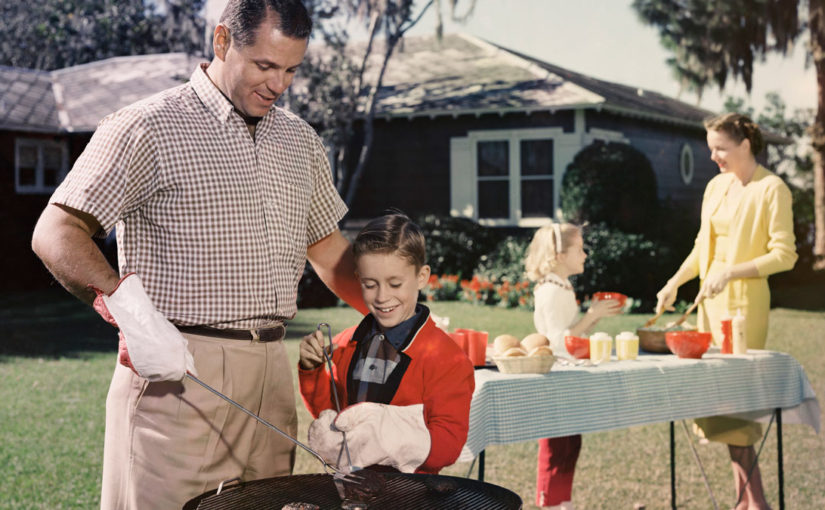Here we discuss how to manage a family household. We show that it is really a very easy thing to do. However, there are rules and roles that MUST be followed for it work perfectly.
Unfortunately today, this is considered to be something that everyone knows how to do automatically. It is not taught. It is not carried down from parent to child. It is just considered to be unimportant. Therefore, very few people know how to really manage a household.
As such there is a dearth of practical information on this subject.

The information herein describes how to manage, and run, a family household in the traditional manner. Here, we discuss the importance of roles, rules, and responsibilities. Also known as “the three “r’s” of family happiness.
Introduction and Summary
There are two ways to manage a household. They are;
- Progressive. There are no rules. There are no roles. There are no responsibilities. Everyone does their “own thing”.
- Traditional. Managed with fixed roles, set rules and firm responsibilities.
There are NO other ways to manage a household. Partial, or experimental rules are always temporary. Unless there are strong and fixed rules, any familial management is progressive. Or to put it in another way, if you do not have roles and rules, you are running the household progressively.
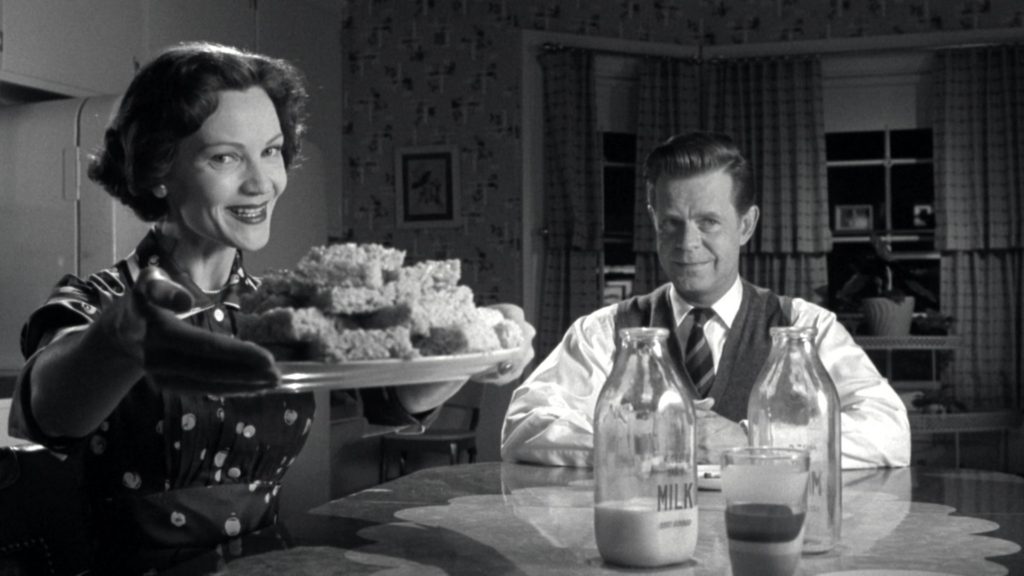
Special important note
While there are some similarity between political usage of this nomenclature, the relationship ends there. There are many politically progressive social liberals that maintain traditional conservative households. For instance, Bill Clinton, Barrack Obama, and Joe Kennedy. They all have very progressive liberal political interests, however they all run and manage their households in a traditional conservative manner.
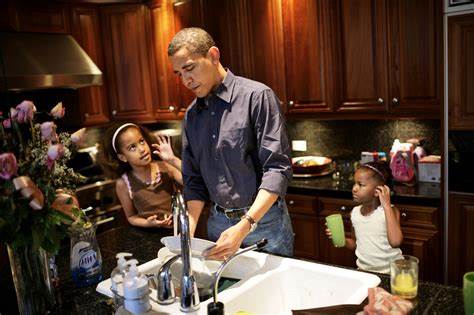
Historical background
America was founded upon and used traditional household management techniques from the very beginning. This served Americans well. It was a time-honored method with centuries of success. Everyone ran their families in the traditional manner. From the immigrants from South America to the American Indians, to the European Settlers. Everyone managed their families using the traditional model.
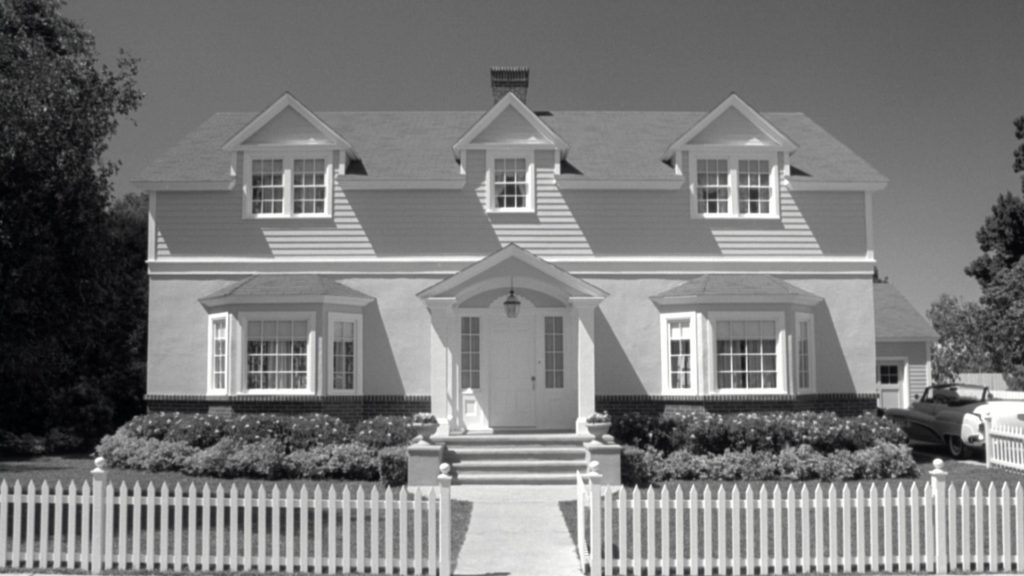
In the traditional model, the man of the house would be the “bread winner”. He would go out and work. He would bring home his earnings and give all of it to his wife. She, in turn, would budget the money for the family. She would handle all domestic issues, the house, the family, the education, the meals and the clothing. Thus freeing up the man to concentrate on one solitary thing; making more money.
It worked well.
Then, around 1913, some new progressive ideas started to take hold of society. This included the Federal Income Tax, the Federal Reserve, and all the “modern progressive” lifestyles.
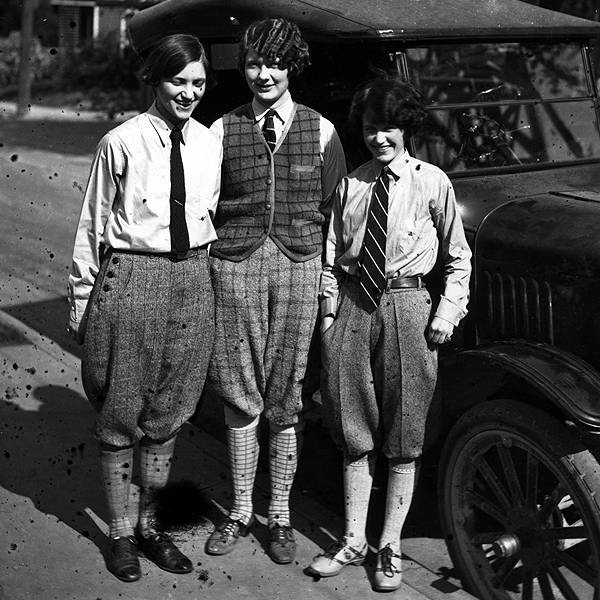
Women and girls started to smoke, wear men’s clothes and flaunt promiscuity. Traditionalists were shocked and tried to downplay these behaviors. But they gained popular attention and were popularized by Hollywood, thus making the progressive lifestyle mainstream.
These ideas were such that rules, roles, and responsibilities would be rejected in favor of a new and improved way of managing families. That is to say, one that has no rules, no roles, and no responsibilities.

This festered in tiny pockets in urban areas up until the 1960’s where it began to become popular due to the need for both parents to work to support the family. (It’s fundamentally due to the rise of inflation caused by federal mismanagement of the US dollar. But that is a discussion for another time.)
The 1970’s saw wide-scale implementation of progressive family management. Which was pretty much management of nothing, using no rules, no roles, and no responsibility. It was kicked off by the SJW Feminist movement in the 1970’s which pretty much put the “kill shot” into traditional family management, and family longevity.
Don’t believe me? Facts don’t lie.
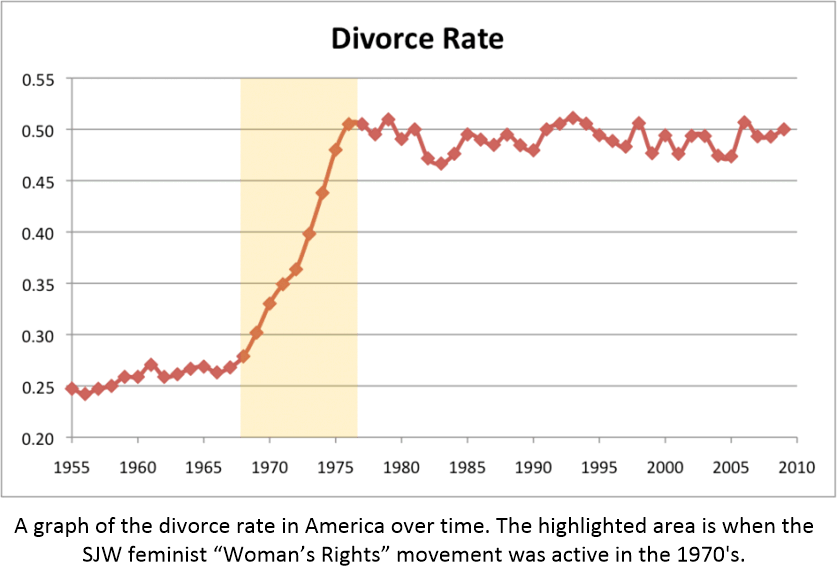
Today, the vast bulk of families manage using the progressive model. There are no roles, no rules, and few (if any) responsibilities. The rare hold-outs are traditionalists that can be found outside the mainstream society.
That is why you will find many people eating fast food for lunch, the rise of poor food choices, and the increase in obesity. That is why most families need to have two incomes. As no one is able to budget on one income.
Here, this post discusses how to run a family using the traditional model. And yes, do so today, in the heavily taxed, stressful, reality that the United States is today.

The Two Roles
In a traditionally managed household, there are two main roles. These are absolute and defined roles with ZERO shared responsibilities.
- The “Man of the House”. He is the figurehead, and the “leader” of the home. He is the sole earner of the family. He gives 100% of his earnings to the family. His job is primarily towards earning money, maintaining household related equipment and repairs, and discipline.
- The “Housewife”. She is totally responsible for the household budget, investment, savings, and all things financial. She is responsible to see that the household is clean, in good care, and that all domestic issues are taken cared for. She selects, chooses, budgets and handles all clothing and food choices for the family. It is her responsibly to make sure that the children are well behaved and being good in school.
In a well-run household, the wife would tell the man what to wear. She would select his clothing. Laying out his work clothes for the day, and his “house clothes” for him (with slippers) when he gets home from work.
Contrary to the progressive narrative, house clothes and slippers are a functional way to keep the house clean. Often the man would work dirty and filthy factory jobs. He would need to strip off his dirty and filthy attire before the housewife would ever let him put a step in the house. Which has led to such things as basement bathrooms (in Pittsburgh) and "Mud Rooms".
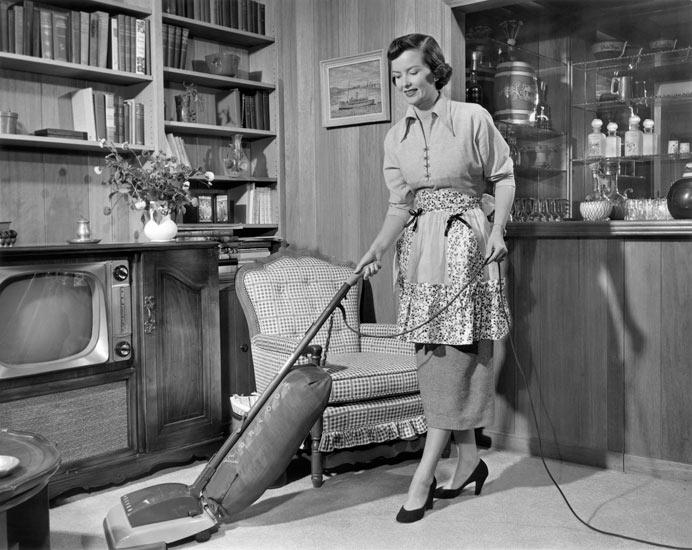
The wife is responsible for good, nutritious meals that are both healthy and tasty. She is responsible for the behavior of the children and teaching them about their roles in the family, in the community, and in society. She is also responsible for their spiritual and moral development.
"After three years of happy marriage, and getting stressed out by her job in a busy payroll department, she decided in 2018 to turn back time — and live like a 1950s housewife. That’s when Holte, 30, transformed her Hillsboro, Oregon, home into a suburban shrine to the pre-ERA era, busying herself cleaning, making dresses using vintage patterns — and getting dinner on the table by the time her husband, Lars, 28, gets home from his job as an engineering manager. “I feel like I’m living how I always wanted to. It’s my dream life and my husband shares my vision,” she says as a vinyl Doris Day soundtrack plays in the background. “It is a lot of work. I do tons of dishes, laundry and ironing, but I love it and it’s helping to take care of my husband and that makes me really happy.” - The woman quits her job to spoil her husband like a 1950s housewife
The man, on the other hand MUST make and earn money. He must not fail at this task. If the housewife says that there isn’t enough money in the budget, then he must plan on how to bring more money in BY HIMSELF. It is his responsibility.

When the husband and the wife are working together as a team, there is nothing that they cannot resolve. The man, unencumbered by day to day squabbles and strife, can best work and plan on making more money to improve the family lifestyle.
The Main Rules
One of the characteristics of a traditional family is that there are rules associated with roles. Each role will have a set of rules associated with it.

Roles with rules are fundamental to the operation of any organization. It’s much like in a hospital. The janitor cleans the floor. The nurse attends to the day to day needs of the patients, the doctor makes medical diagnoses, and the patient just lies on the bed and concentrates on getting well.
The rules for the “Man of the House” are…
- Earn money.
- Give all the money to the housewife to budget.
- Represent the family in appearance, action, and behavior.
- Repair and maintain things as needed.
- Maintain and discipline the children as needed.
- Assist in the education of the children as advised by the wife.
- Enforce rules.
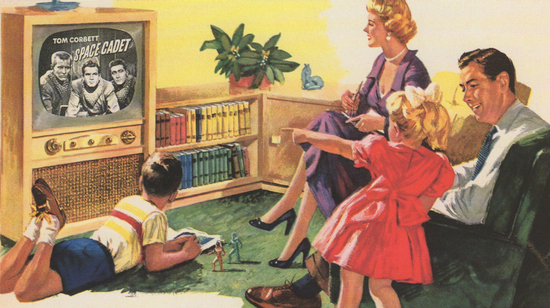
The rules for the “Housewife” are…
- Budget the money.
- Create numerous savings accounts.
- Maintain and keep the household, clean, tidy and presentable.
- Cook, and plan fine delicious and healthy meals.
- Make sure that everyone is well attired with clean clothes.
- Maintain a “warm hearth”; a household free of stress.
- Represent the family in the community, church, and society.
- Teach the children.
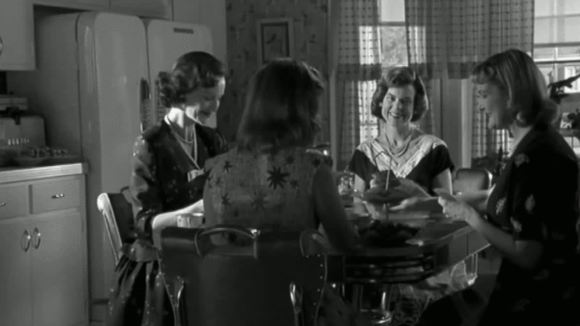
God forbid I go into someplace like Harbor Freight with a big wad of cash. Yeah, give me a sec and I’ll back right up to the front door to making loading all this crap I don’t need into the back of my rig easier. This is why the Wifely Unit takes care of the money around here. I’m horrible about that shit . That is why our bills get paid on time and why I now actually have a killer credit score. -Busted Knuckles
Characteristics of a Traditionally Managed Family household
You might find the following characteristics within a traditional conservative household…
- Savings to cover any emergency.
- Cleaned and ironed clothes.
- Toothbrushes replaced bi-monthly.
- Trim and fit family members.
- Formal sit-down meals.
- Well tended yard.
- “His” chair.
- “Her” bathroom.
- House shoes (slippers) beside the front door.
- A pantry that is full. (A consequence of budgeting.)
- Well behaved, and respectful, children.
- Hours where the kitchen is “closed” from use.
- A lack of dirty dishes. (The sink is always clean and spotless.)
- Formal sit-down dinner meals.
- Rules about smart-phone use in the house.
- A fully stocked refrigerator.

Some things that a Progressive Liberal family cannot do
If a family falls into the progressive liberal “trap”, often out of necessity, they will have a difficult time. They will be unable to enforce any type of traditional conservative family rules. It’s simple really. When people live a life without rules, they resent any rules when they are put in place. It’s human nature.
Thus, here are some things that progressive liberal families have to struggle with. Traditional conservative families won’t experience these problems.
The things that progressive liberal families have trouble with include…
- Formal dinners at dinner time. Most progressive liberal families have a very difficult time with this. They find it difficult to set aside time and have difficulty in getting everyone to recognize the importance of communal dinners. When they do manage to set time aside, it is often short, and the experience becomes a mere formality. It is never a daily event.
- Chores and roles. Progressive liberal families are disgusted by roles and greatly resent taking on any kind of responsibility. they have a very negative view of any kind of male or female role and avoid it where at all possible. As a result, the household tends to become cluttered, messy, dirty, and disheveled.
- Saving Money. Most progressive liberal families have an understanding that what a person earns is theirs to do with they wish. Thus it is very difficult for them to save money. Especially saving money for family purposes.
- Discipline. When children are raised in a progressive Liberal household; one where there are no rules, the children become unruly and directionless. They often develop emotional and behavioral issues. This becomes a burden to the rest of the family.
Some good links
I have numerous other posts specifically related to this subject. If you enjoyed this article, then you might find the other articles quite interesting and enlightening. Please click on any of the links. They will open up into another tab on your browser.




In addition, I have some thoughts on some “tools” that might be beneficial to the wife and husband…


Here is a post that might help the housewife balance the family budget when the income source drops from a two-person income to that of a singular wage-earner…

Conclusion
There are two ways of managing a family. You can manage either progressively, or traditionally. If you want to manage traditionally, you will need to take on a completely different mind-set. In the long run you will be healthier and happier, but the adjustment might be painful for some.
Posts Regarding Life and Contentment
Here are some other similar posts on this venue. If you enjoyed this post, you might like these posts as well. These posts tend to discuss growing up in America. Often, I like to compare my life in America with the society within communist China. As there are some really stark differences between the two.




























Posts about the Changes in America
America is going through a period of change. Change is good… that is, after it occurs. Often however, there are large periods of discomfort as the period of adjustment takes place. Here are some posts that discuss this issue.















More Posts about Life
I have broken apart some other posts. They can best be classified about ones actions as they contribute to happiness and life. They are a little different, in subtle ways.


























Stories that Inspired Me
Here are reprints in full text of stories that inspired me, but that are nearly impossible to find in China. I place them here as sort of a personal library that I can use for inspiration. The reader is welcome to come and enjoy a read or two as well.



























Articles & Links
You’ll not find any big banners or popups here talking about cookies and privacy notices. There are no ads on this site (aside from the hosting ads – a necessary evil). Functionally and fundamentally, I just don’t make money off of this blog. It is NOT monetized. Finally, I don’t track you because I just don’t care to.
- You can start reading the articles by going HERE.
- You can visit the Index Page HERE to explore by article subject.
- You can also ask the author some questions. You can go HERE to find out how to go about this.
- You can find out more about the author HERE.
- If you have concerns or complaints, you can go HERE.
- If you want to make a donation, you can go HERE.

